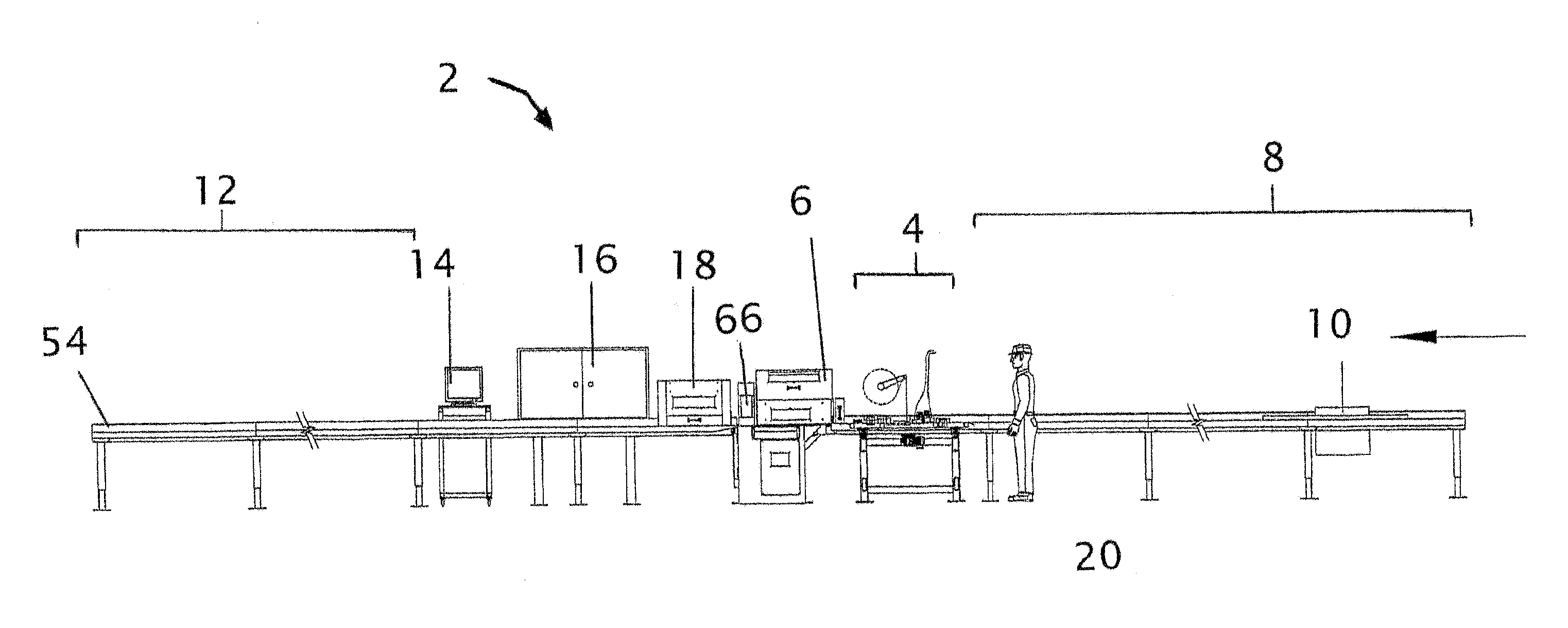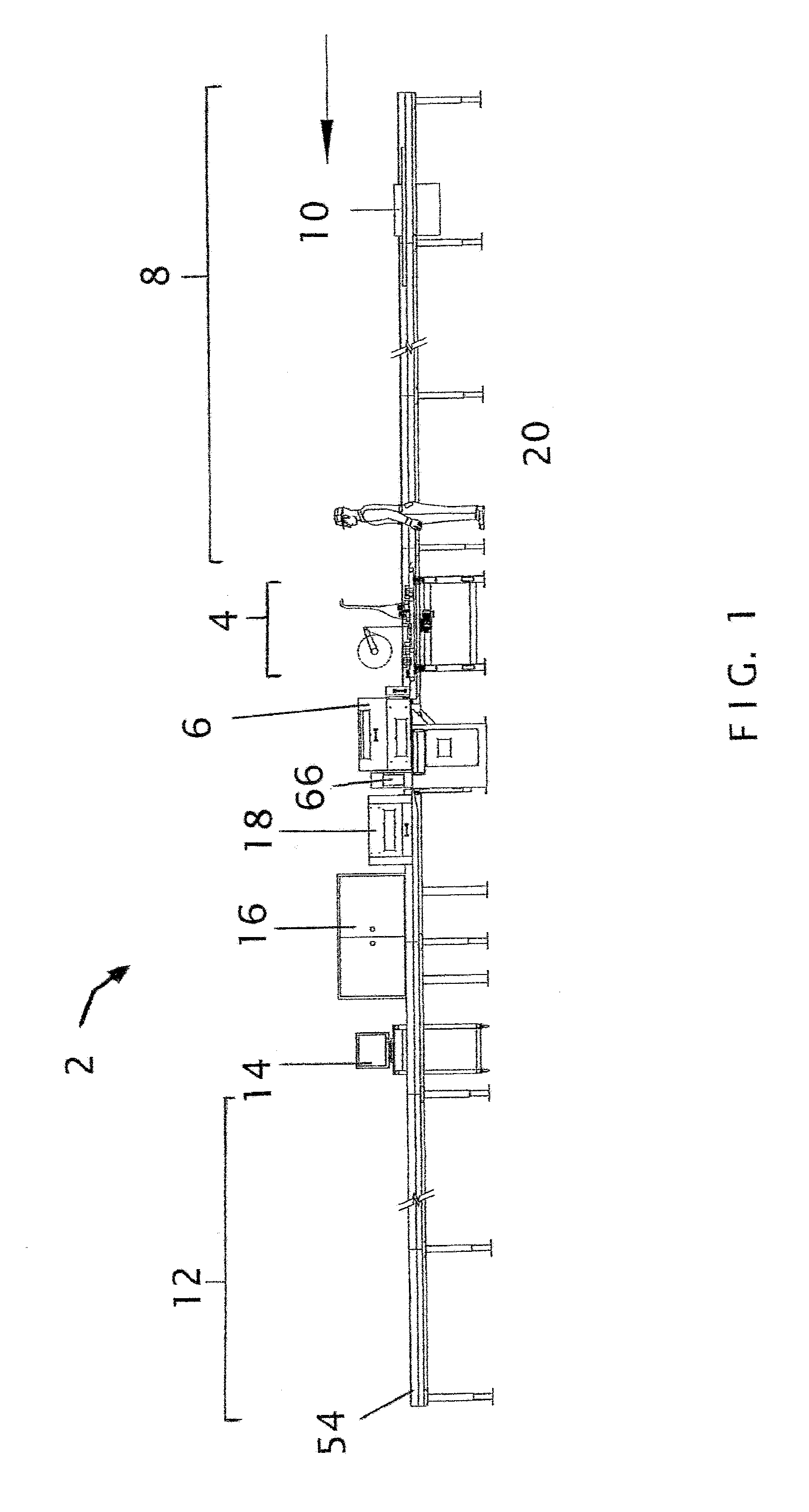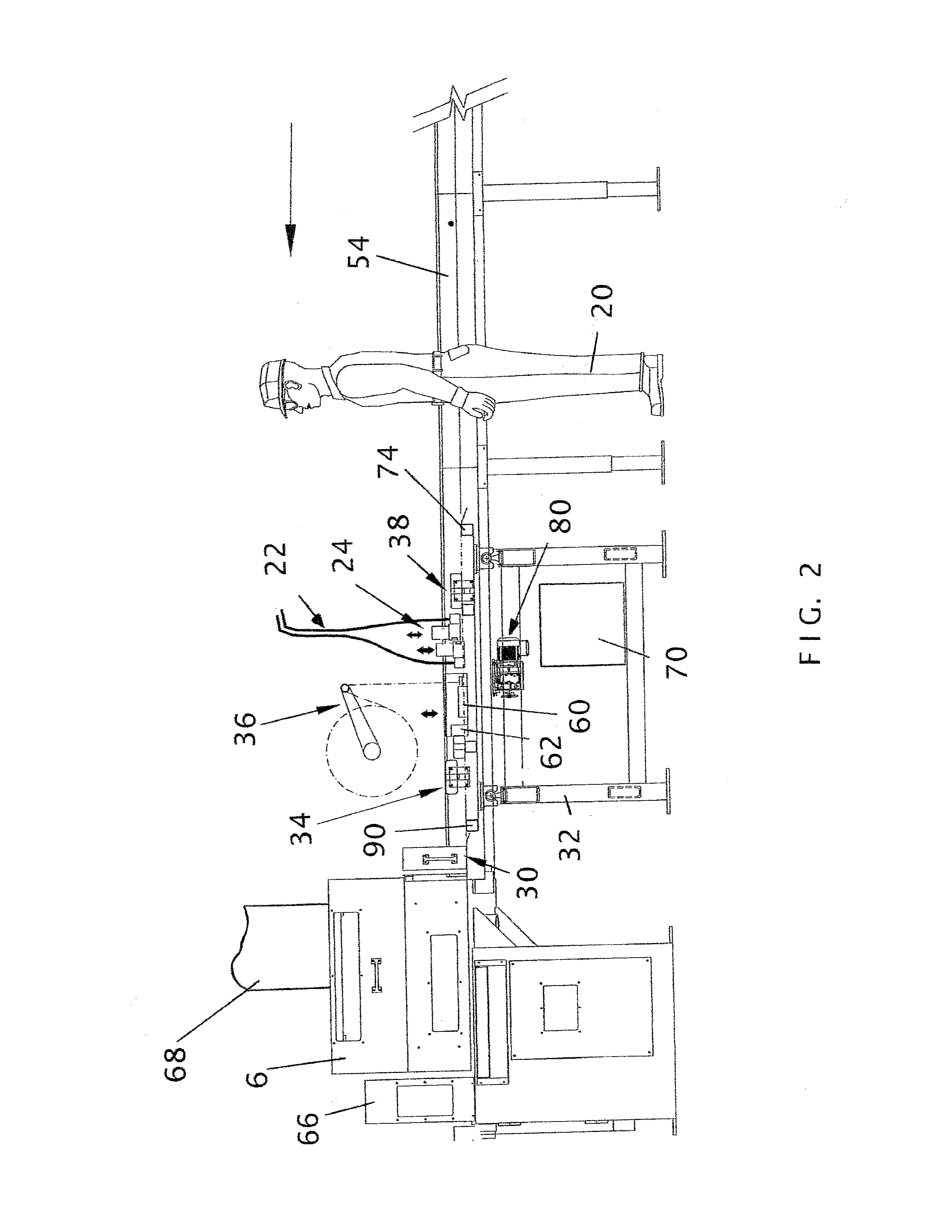System and method for applying adhesive, buffer, and/or liner to I-joists
a technology of i-joists and buffers, applied in the field of automatic equipment, can solve the problems of significantly increasing construction costs, on-site manual application of liquid adhesives during floor construction, and inability to achieve the maximum sheer and strength of the finished construction project, etc., to achieve strong and consistent bonding, reduce noise, and reduce construction costs
- Summary
- Abstract
- Description
- Claims
- Application Information
AI Technical Summary
Benefits of technology
Problems solved by technology
Method used
Image
Examples
Embodiment Construction
[0021]The present invention provides a system and method for producing value-added construction materials that achieve a more consistent bond between structural framing components, such as but not limited to smaller I-joist 44 and larger I-joist 42 in FIG. 3, and adjacent sheer panels (not shown) to achieve maximum overall strength in finished construction. When buffer materials are applied instead of glue or adhesive, or in combination therewith, noise in finished construction can be reduced. Typically, as a result of present invention system and method use, but not limited thereto, framing components, such as roof trusses, floor trusses, floor and ceiling joists, walls studs, roof and wall sheathing, and floor panels, will have adhesive (shown in FIG. 8 by the number 58) applied during manufacture to at least one surface, with the adhesive being configured and dimensioned to meet up with the intended contact area of the opposing component to which it will be joined after adhesive ...
PUM
| Property | Measurement | Unit |
|---|---|---|
| length | aaaaa | aaaaa |
| length | aaaaa | aaaaa |
| distance | aaaaa | aaaaa |
Abstract
Description
Claims
Application Information
 Login to View More
Login to View More - R&D
- Intellectual Property
- Life Sciences
- Materials
- Tech Scout
- Unparalleled Data Quality
- Higher Quality Content
- 60% Fewer Hallucinations
Browse by: Latest US Patents, China's latest patents, Technical Efficacy Thesaurus, Application Domain, Technology Topic, Popular Technical Reports.
© 2025 PatSnap. All rights reserved.Legal|Privacy policy|Modern Slavery Act Transparency Statement|Sitemap|About US| Contact US: help@patsnap.com



